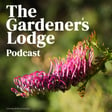
Australian Native Bees with Clancy Lester
Clancy Lester is an Australian Native Bee expert. Forget everything you thought you knew about bees. According to Clancy Lester, environmental educator and native bee researcher, the true heroes of Australia’s pollination story aren’t European honeybees, but thousands of native species that rarely get noticed—or understood.
FREE NATIVE NATIVE GARDEN DESIGN DOWNLOAD: https://thegardenerslodge.co.uk/freenativedesigndownload
________
Episode Links:
Clancy's Instagram - https://www.instagram.com/beesandblossoms.aus/
Clancy's Website - https://nativebeehotels.com/
________
Mykal's Links:
Website - https://thegardenerslodge.co.uk/ Instagram - https://www.instagram.com/thegardenerslodgeuk/ Tik Tok - https://www.tiktok.com/@thegardenerslodge
Growing Media Production ©2025
